Advertiser Case Study: Smart Bid is an effective strategy to turn losing campaigns into winners

Before reading this Smart Bid advertiser campaign case study, if you are not familiar with the Smart Bid automated bidding feature for advertisers, we recommend that you first read this article to help you better understand the pricing model feature. Then in this Smart Bid advertiser campaign case study, we will demonstrate how an advertising campaign evolved over time using the Smart Bid feature to deliver the results desired by the advertiser. Here we will see how by using Smart Bid with the Native ad format for a range of Dating offers, the advertiser was able to reach his Target ROAS (Return on Ad Spend) of 120% with this ExoClick Smart Bid case study. Its the perfect solution for automated bidding for Native advertising.
Campaign Overview
Offers: Dating
Payout model: PPL
Ad format: Native
Ad network: ExoClick
GEO: US
Native: An attractive ad format, complex to master
The advertiser launched a Native campaign in the US. The objective was to identify new traffic sources, allowing him to generate additional profit using the Native ad format. The advertiser was rotating several Dating offers with different PPL values, therefore the conversions had dynamic values. This was an important factor in choosing to use a Target ROAS bid strategy instead of Target CPA strategy for the Smart Bid campaigns.
Objective: 120% ROAS
Main constraints: Offers capped at 200 leads per day
Initial Campaign Setup:
Country: US
OS: All
Device Type: Mobile
Traffic Type: All
Zones Targeting: All
Categories: All
Frequency Capping: 1/24
Smart CPM: $0.20
Daily Budget: $800
Initial results with a normal Smart CPM campaign
With the initial campaign settings it was time to analyze the campaign one week after its launch. The advertiser advised their ExoClick account manager of the campaigns poor performance and was considering abandoning this format which, according to him, was “unmanageable due to a large number of zones”. At that very moment, the campaign had a ROAS of 48% (ROI -52%).
The account manager looked at the campaign’s statistics and found several points that contributed to its poor results:
- A high number of zones: A format such as Native represents a real challenge for any media buyer. The large number of Native zones offered on ExoClick’s network makes campaign management time-consuming and challenging to configure an adequate bid on each zone manually.
- Poor distribution of spending between zones: When launching a test campaign targeting thousands of zones, the main objective is to identify high performing ad zones that could generate profit. However, 90% of the campaign’s spending was concentrated on four zones and the campaign reached its daily budget after 10 hours. These high-volume zones were holding back the campaign and the campaign needed to allow for more spending on other low-volume zones that were potential sources of profit.
- Underperforming dimensions: Additionally, some browsers and devices were impacting the overall ROAS of the campaign.
In the table below you can see the advertisers results from his initial targeting and bidding strategy:
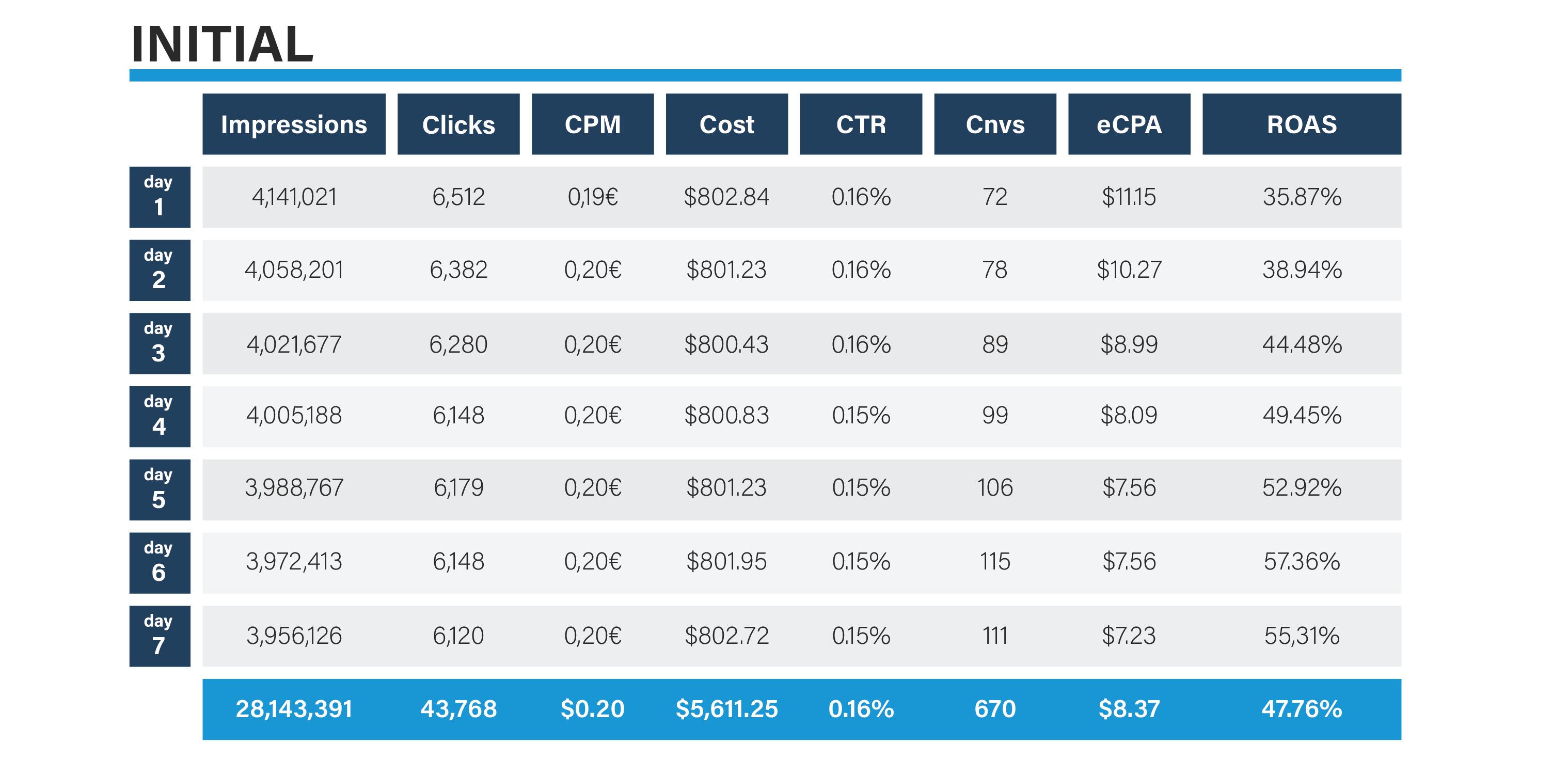
It was time for a change of strategy…
Smart Bid : The way to go
The Native ad format is indeed a format that offers thousands of zones which inevitably requires a large amount of time in its management: setting up a correct bid per zone, blocking unprofitable zones,etc. The advertisers account manager recommended switching to a Smart Bid payment model. This would fully automate the campaign according to the advertisers target ROAS. For this strategy, Target ROAS was suggested rather than Target CPA, due to dynamic value for each conversion.
In setting up this Smart Bid advertiser campaign case study, the first step was to advise the advertiser to create two campaigns to better distribute the budget and the offer daily cap. The first campaign targeted four zones that reported 90% of the spending from the initial campaign, and the second campaign targeted all zones except those from campaign 1. The objective of this strategy was to ensure that the offer cap remained allocated to the second campaign targeting lower volume zones to ensure proper testing.
This took advantage of the initial campaign to carry out more relevant targeting on campaign 1 by excluding the underperforming devices and browsers. In addition, the advertiser removed the worst-performing variations from the campaign, which maximized the chances of reaching the target ROAS that the advertiser wanted to reach. Regarding campaign 2, it was suggested not to touch the targeting, because the spending on the initial campaign needed to be more significant in the targeted zones to draw relevant conclusions.
For the Smart Bid ROAS setting 100% Target ROAS was selected, which meant that the initial objective was to reach the breakeven. Please note: It is crucial to have a Target ROAS that is not too ambitious at the launch of a Smart Bid campaign to avoid over-optimizing the campaign to the detriment of volumes. Of course, the Target ROAS can be adjusted as the campaign progresses and according to its initial results.
Setup Campaign 1
Country: US
OS: All
Device Type: All except Huawei, Vivo, and Oppo
Traffic Type: All
Zones Targeting: 4713984,470346, 4945834,4461824
Categories: All
Frequency Capping: 1/24
Bid Strategy: Target ROAS: 100%
Bid Optimization: Maximize Volume
Daily Budget: $400
Setup Campaign 2
Country: US
OS: All
Device Type: All Mobile
Traffic Type: All
Zones Targeting: All except 4713984,470346, 4945834,4461824
Categories: All
Frequency Capping: 1/24
Initial CPM: $0.20
Bid Strategy: Target ROAS: 100%
Bid Optimization: Maximize Volume (week 1-2) Maximize Target ROAS (week 3)
Daily Budget: $400
First week results using Smart Bid
After one week, Campaign 1 reached a ROAS well above the target (138%). There was a significant increase of the CPM from $0.20 to $0.32; this means that the Smart Bid identified performing segments on which it positioned itself with an aggressive bid to maximize volumes; on the contrary, we notice segments on which the campaign did not deliver any more traffic after the first day, due to an ROAS well below the target.
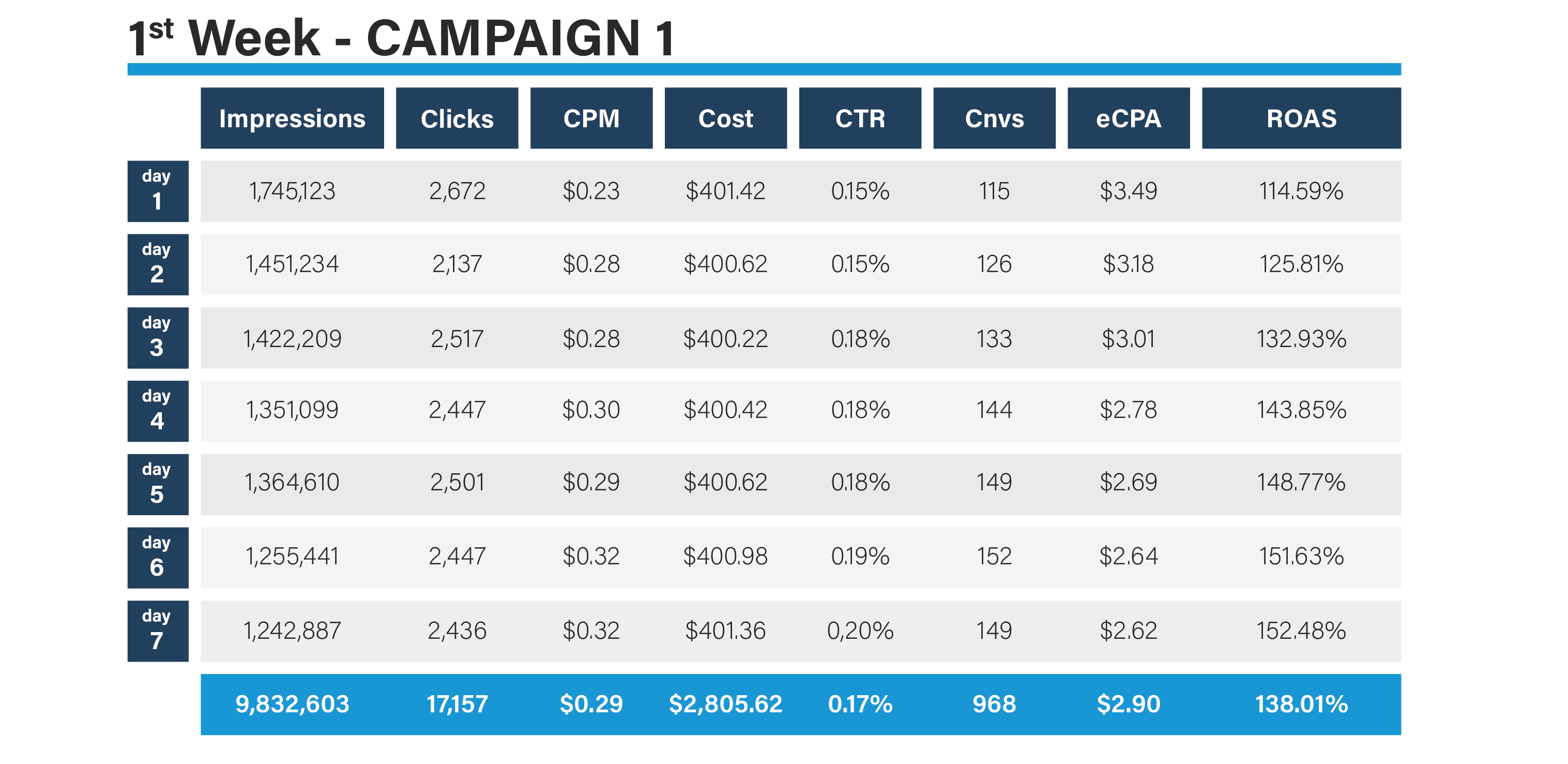
Campaign 2 recorded a ROAS of 71%, below the advertiser’s target. However, the results were more than encouraging, as the zones that spent the most and collected significant data, were on target. The overall performance was impacted by the large number of zones that did not have enough data for the Smart Bid to take over, so they were bidding based on the initial CPM configured, equivalent to a regular Smart CPM campaign. This campaign simply needed time to allow the Smart Bid to identify more optimizable segments.
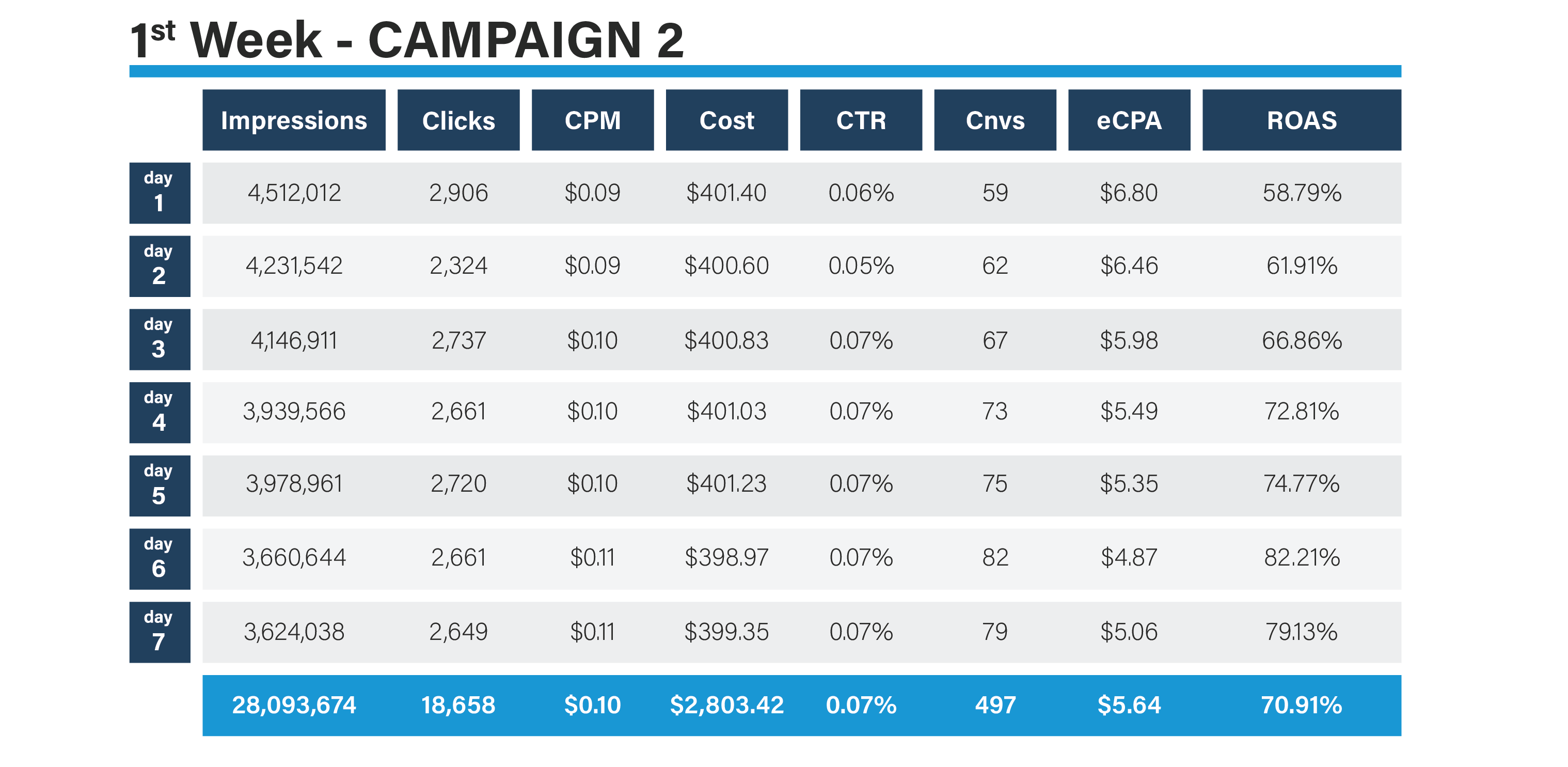
Second-week results using Smart Bid
At the end of the second week for the Smart Bid advertiser campaign case study, Campaign 1 recorded a target ROAS that was still above the target and significantly higher than the previous week (149%). The CPM was almost identical, $0.33 vs. $0.32.
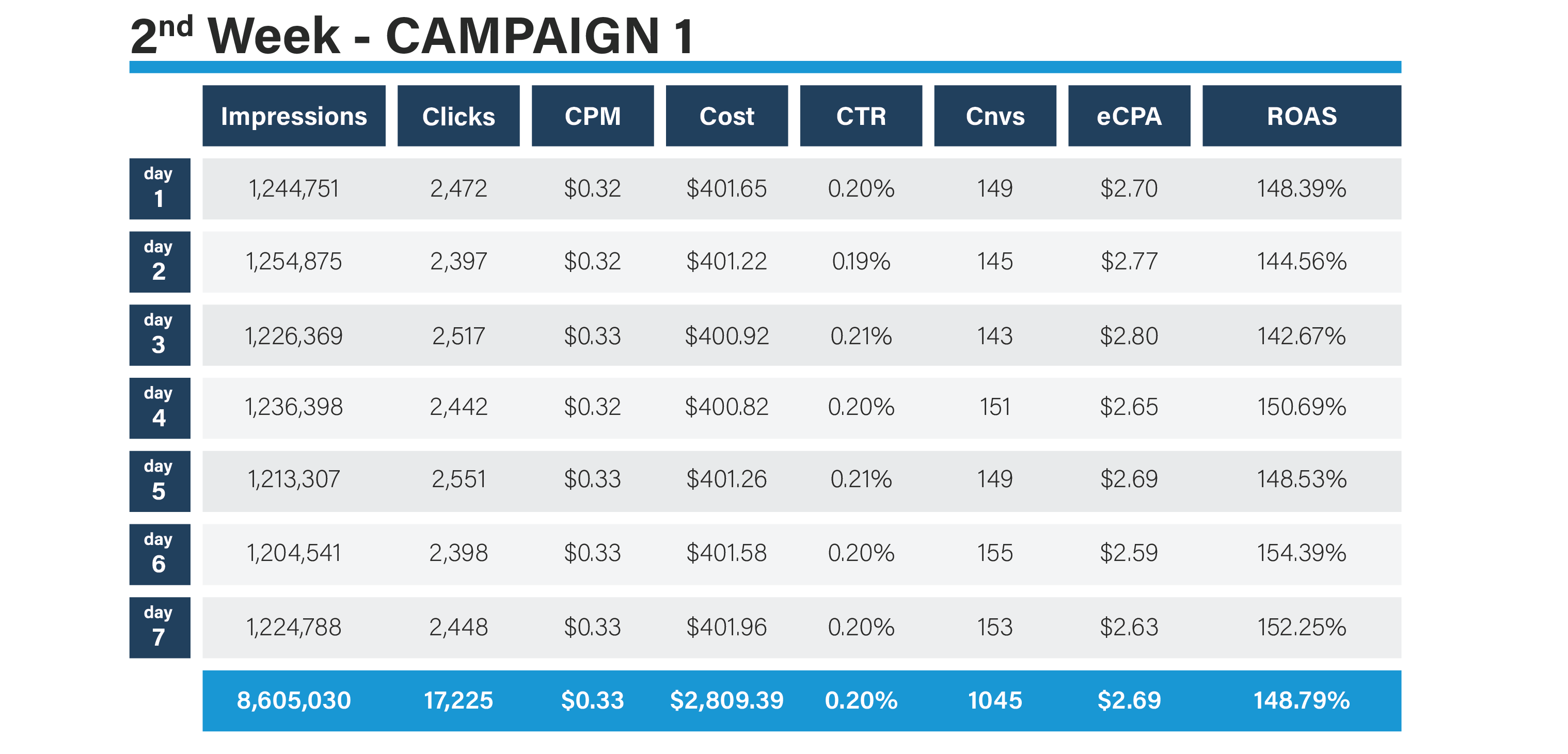
Campaign 2 also recorded a target ROAS with a clear progression passing from 71% to 83%. Of course, it would be necessary to let the campaign run for several weeks to make a profit due to the large number of zones.; given the significant volumes, it was suggested to the advertiser to switch the bid optimization from “Maximize Volume” to “Maximize target ROAS ” in order to focus on the ROAS and not on delivering conversion volume.
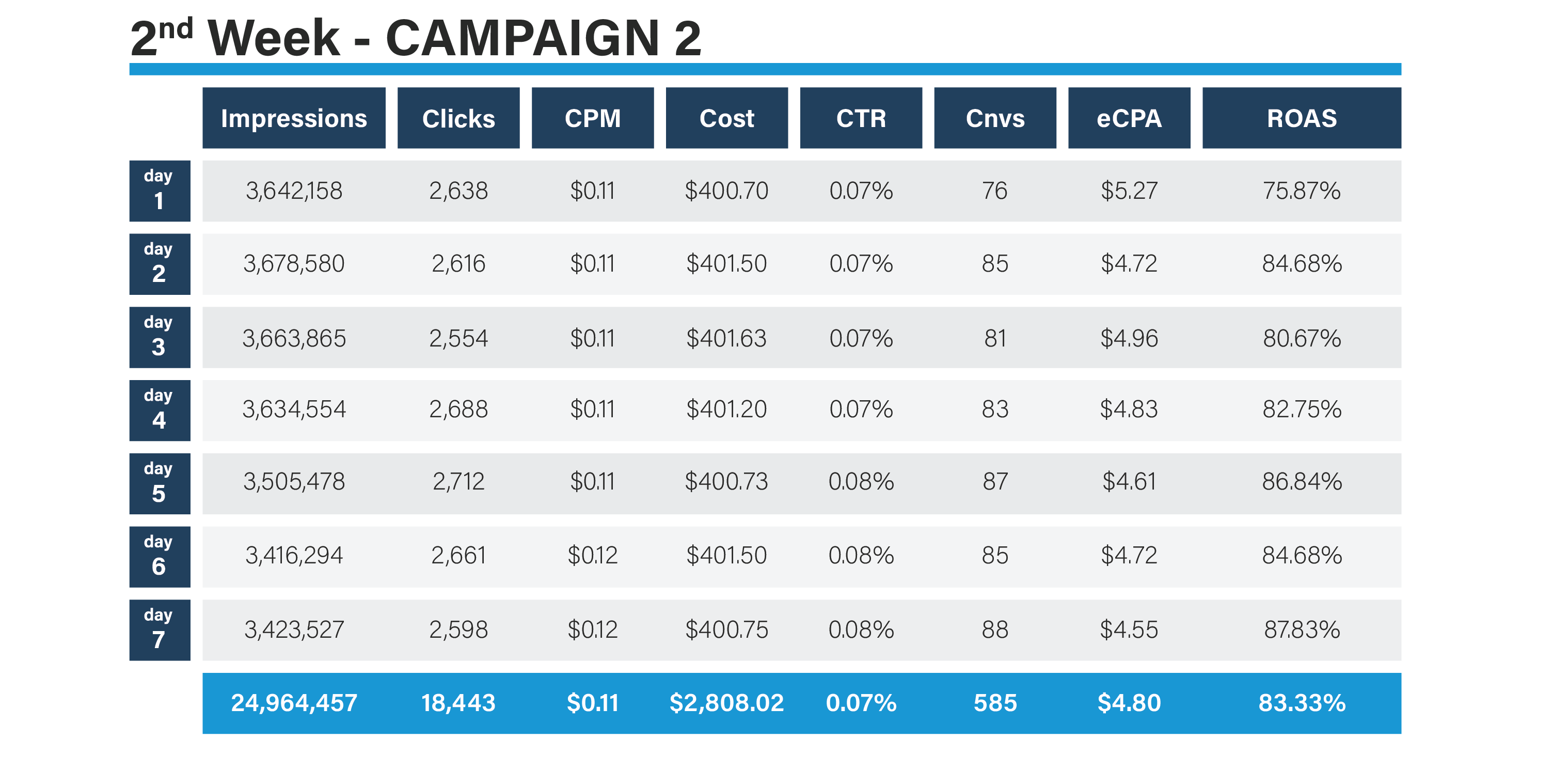
Third-week results using Smart Bid
In the third and final week of testing for this Smart Bid advertiser campaign case study, we can see that there was no significant change on Campaign 1’s ROAS, and CPM was stable, so we can assume now that most segments are fully optimized.
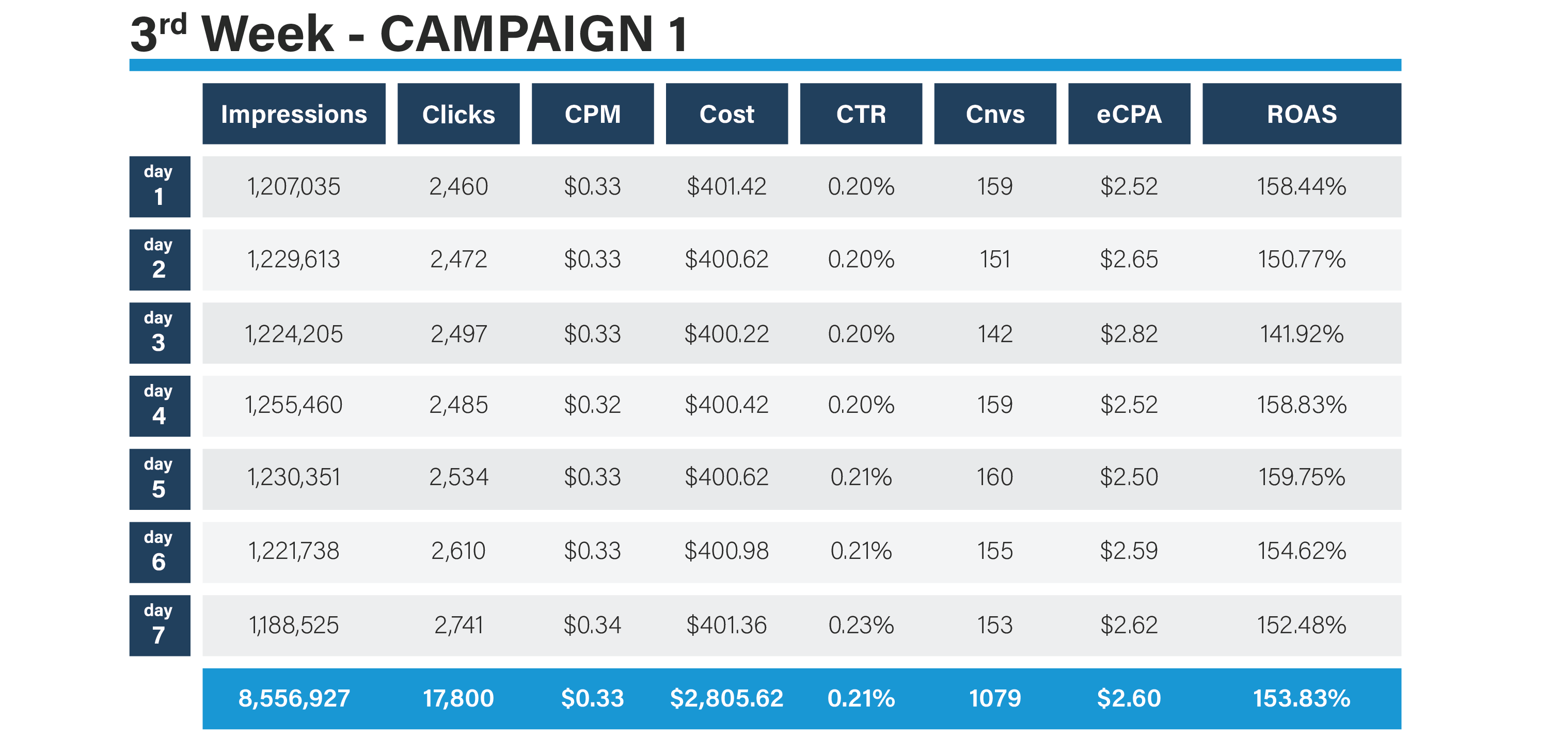
Concerning Campaign 2, once the Bid Optimization changed to maximize Target ROAS, the ROAS improved from 83% to 120%, which was the advertisers initial objective. We noticed that several segments were no longer receiving traffic due to the change in optimization strategy prioritizing ROAS instead of volume. All zones with an ROAS below target had mostly recorded a significant drop in CPM, leading to a decline in traffic. As can be seen in the graph below, overall, the change in optimization strategy clearly allowed the campaign to focus the budget on segments with an ROAS above the target set at the campaign level.
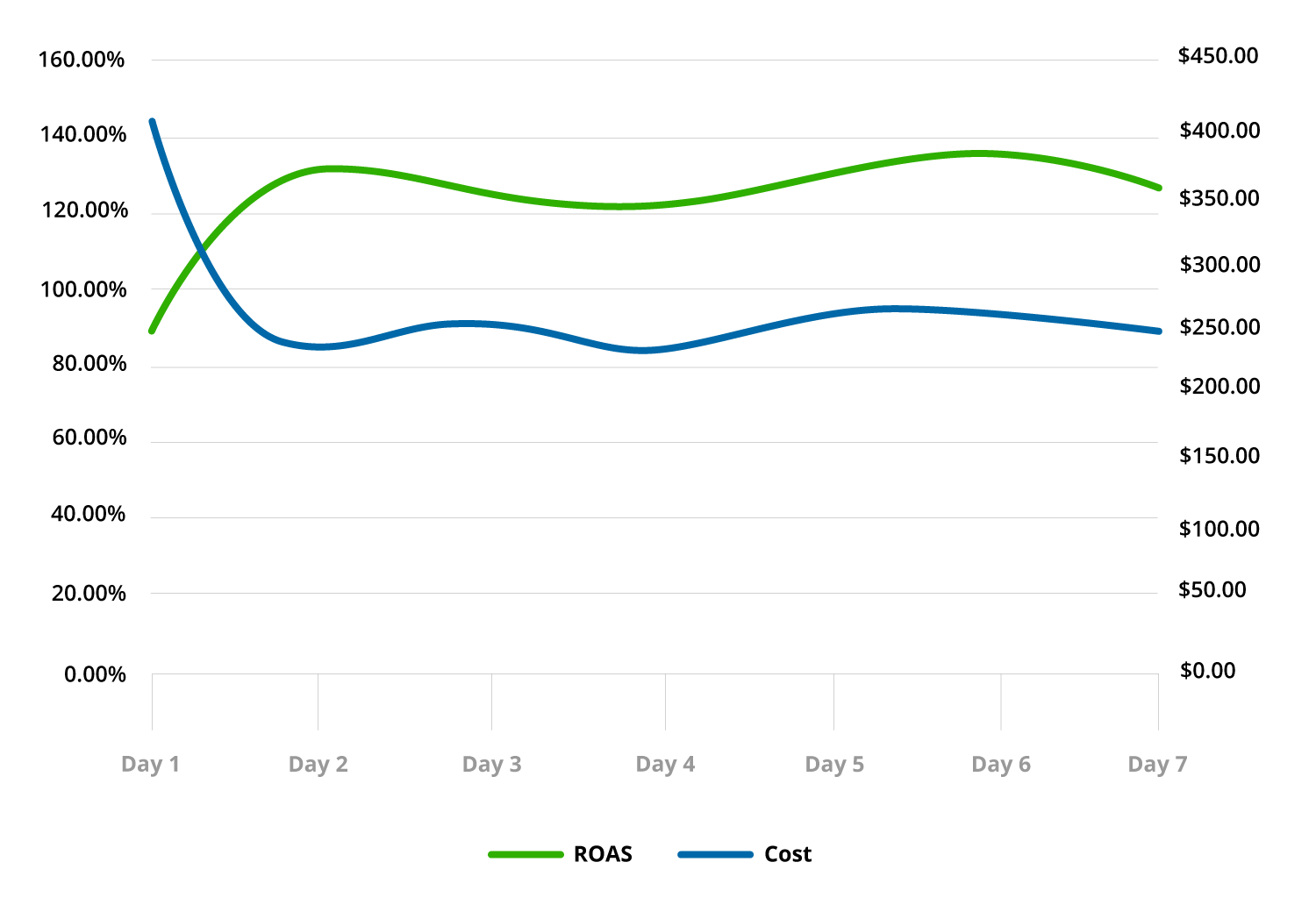
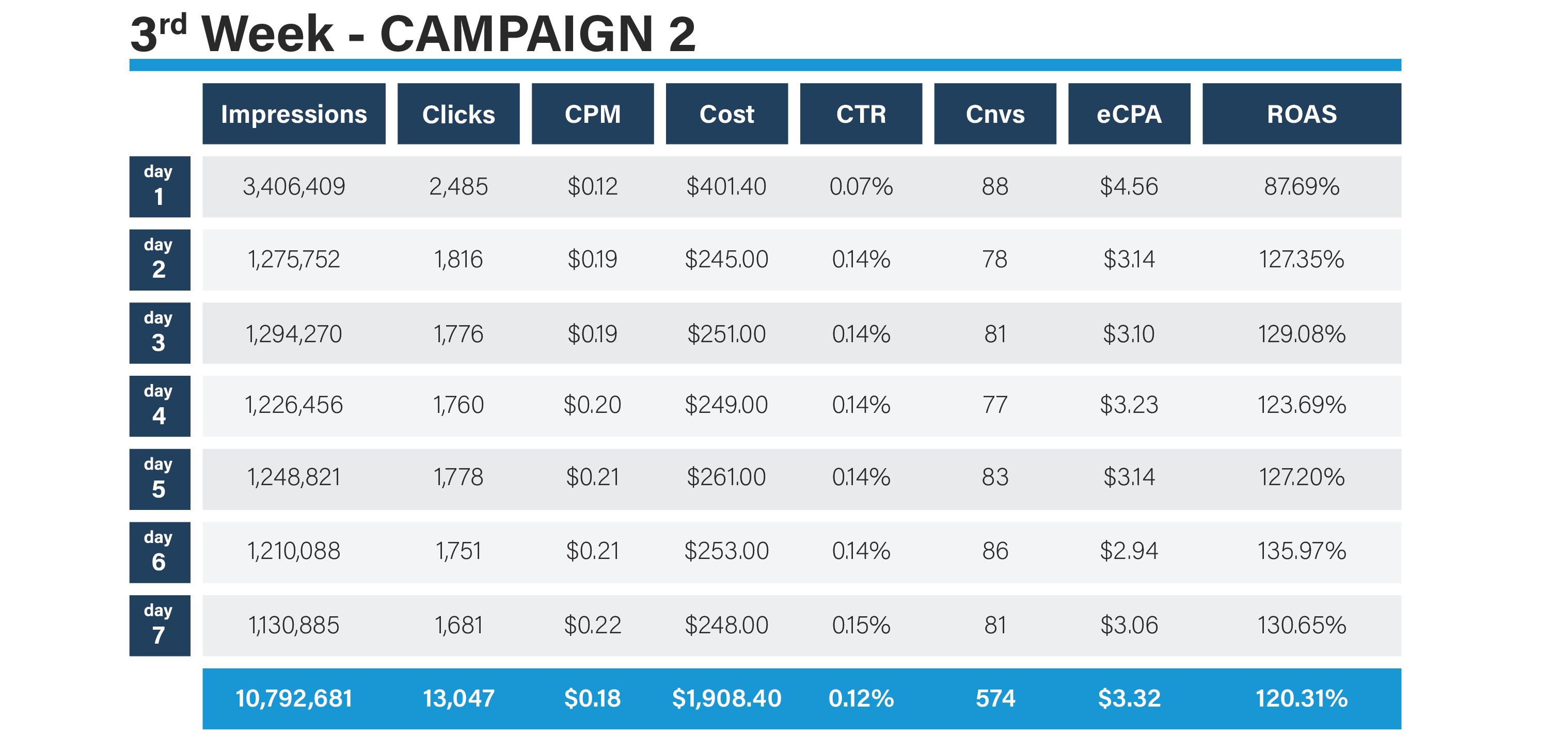
Conclusion
As you can see this is the perfect solution to automated bidding for Native advertising. We hope that this Smart Bid advertiser case study has shown you just how effective it can be. Smart Bid is a powerful feature that allows advertisers to optimize bids on specific segments, which is impossible with other bidding models. The Smart Bid is the recommended model for campaigns targeting huge volumes of zones, as it will guarantee optimal optimization of your campaign and relieve you of the tedious tasks that managing a complex campaign requires. The success of a Smart Bid campaign will depend on the data collected, so it is essential to leave enough time for the campaign to better calibrate the bids according to the Target ROAS. Check out our Smart Bid documentation to get started with your own Smart Bid campaign.